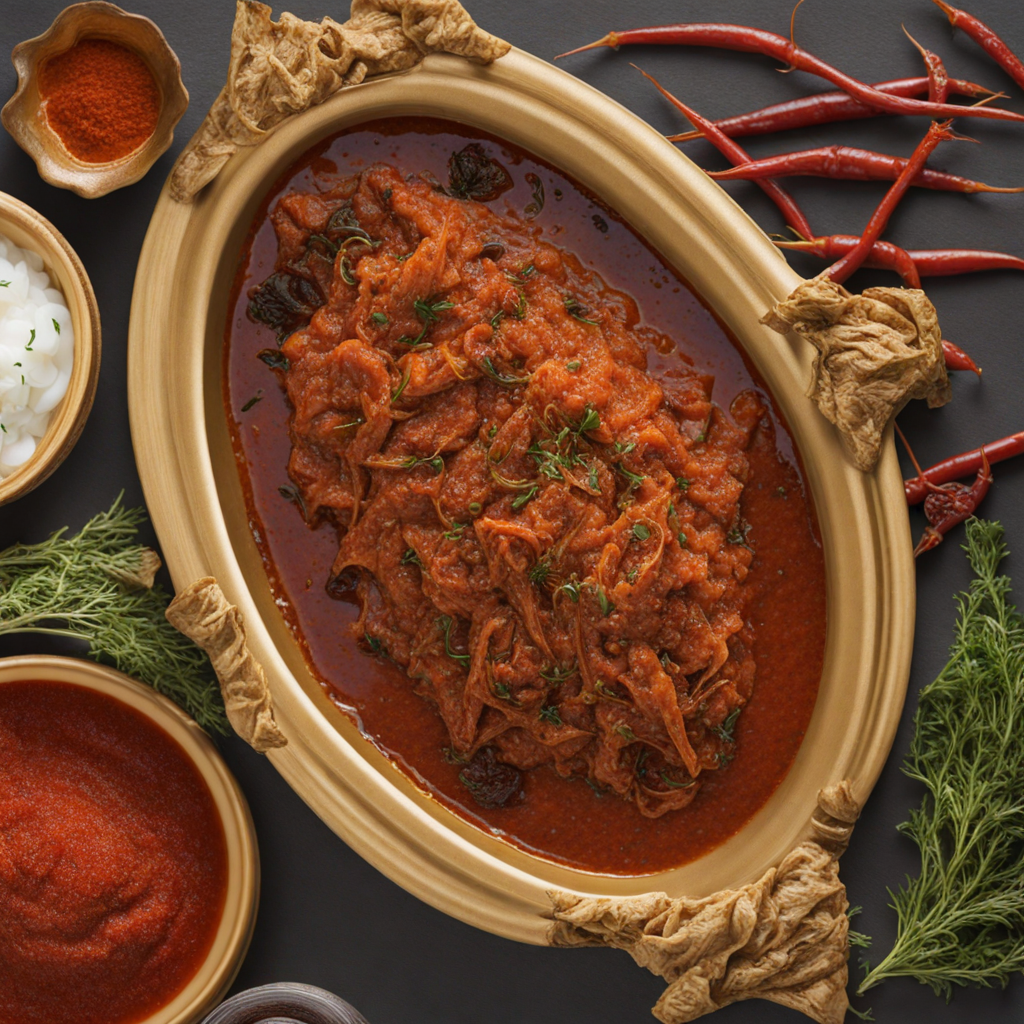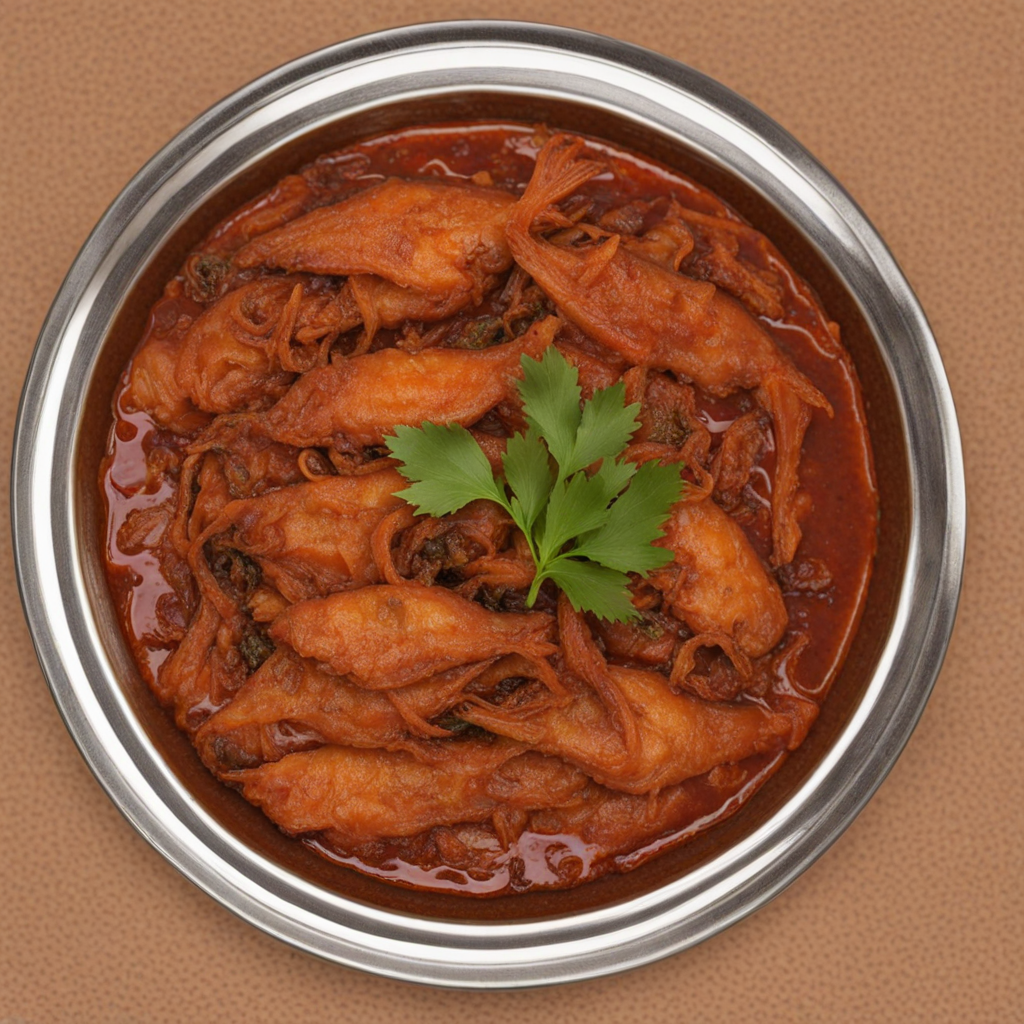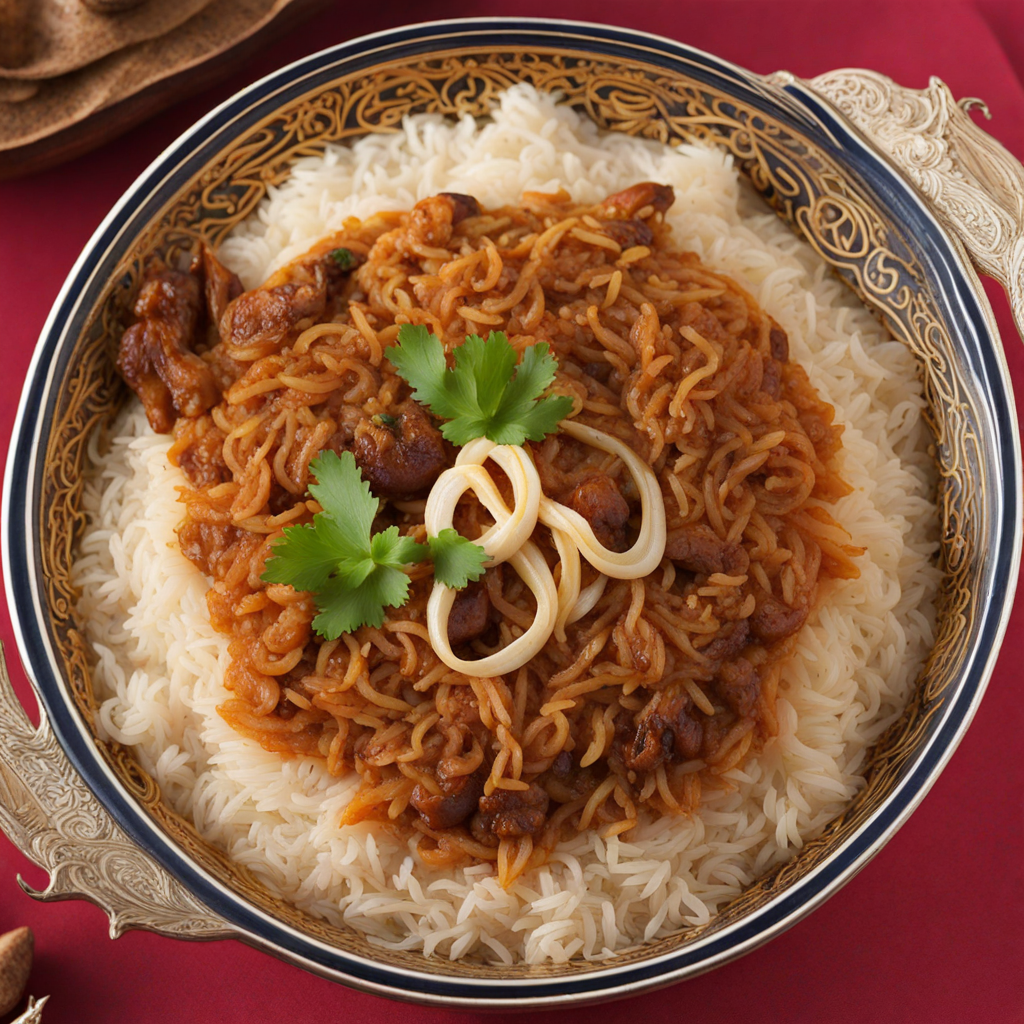Madrooba
Madrooba is a traditional Emirati dish that encapsulates the rich culinary heritage of the United Arab Emirates. This hearty meal is primarily made with fish, often using local varieties such as hammour or shari, which are known for their tender, flaky texture. The fish is first marinated with a blend of spices that may include turmeric, cumin, and coriander, enhancing its natural flavors. The marinated fish is then cooked until perfectly tender, often accompanied by a mix of sautéed onions and tomatoes that add depth and sweetness to the dish. What sets Madrooba apart is its unique method of preparation, which involves cooking the fish in a creamy sauce made from a base of rice and fish broth. The rice absorbs the savory flavors and creates a comforting consistency that makes the dish both satisfying and nourishing. This combination of ingredients is usually simmered together until the rice is fully cooked and infused with the aromatic spices, creating a delightful medley of tastes and textures that truly represents the essence of Emirati cuisine. Madrooba is typically served as a communal dish, inviting friends and family to gather around and share in the experience. Often garnished with fresh herbs and a sprinkle of lemon juice, it offers a refreshing contrast to the richness of the fish and rice. This dish not only showcases the culinary artistry of the UAE but also reflects the cultural significance of sharing meals, making it a must-try for anyone looking to explore the vibrant flavors of Emirati food.
How It Became This Dish
The History of مدروبة (Madrubah): A Culinary Gem of the United Arab Emirates Introduction The United Arab Emirates (UAE) is a land steeped in rich cultural heritage and culinary diversity, shaped by its geographical location and historical trade routes. Among the myriad of dishes that define Emirati cuisine, مدروبة (Madrubah) stands out as a dish of profound cultural significance and historical depth. This traditional dish, which is a sweet, often made with dates and other locally sourced ingredients, reflects the rich agricultural heritage of the region, the influence of Bedouin culture, and the evolving tastes of a modern society. Origins of Madrubah Madrubah is believed to have originated from the Bedouin tribes that roamed the deserts of the Arabian Peninsula. The nomadic lifestyle of these tribes necessitated the use of ingredients that could withstand the harsh climate and long journeys. Dates, a staple food in the region, were often combined with other local ingredients to create calorically dense and nutritious dishes. The word “Madrubah” itself is thought to derive from the Arabic term for “to mash” or “to mix,” indicative of the method used in preparing the dish. Traditionally, Madrubah was made using simple, accessible ingredients such as dates, wheat flour, and milk. The dates would be pounded to create a sticky paste, which was then mixed with flour and water, resulting in a doughy consistency. This mixture could be cooked over a fire, often using an iron griddle known as a “saj,” which was common among the Bedouins. The resulting dish was not only a source of sustenance but also a means of preserving food in a region where resources could often be scarce. Cultural Significance Madrubah holds a significant place in Emirati culture, serving as a symbol of hospitality and community. The dish is often prepared during special occasions such as weddings, Ramadan, and Eid celebrations. It embodies the spirit of sharing, as families and friends gather to enjoy this hearty treat. In many Emirati households, the preparation of Madrubah is an event that brings generations together, passing down skills and stories that connect the younger generation with their heritage. In the context of Emirati hospitality, serving Madrubah to guests signifies a warm welcome and a gesture of respect. This dish, often accompanied by Arabic coffee (qahwa) or tea, reflects the traditional values of generosity and warmth that are deeply ingrained in Emirati culture. The act of sharing food has always been a cornerstone of social interaction in the UAE, with Madrubah serving as a central player in this culinary narrative. Development Over Time As the UAE evolved from a collection of small fishing villages and trading posts into a modern nation-state, the culinary landscape also transformed dramatically. The discovery of oil in the mid-20th century brought an influx of wealth and a wave of modernization, which influenced traditional food practices. While the core ingredients of Madrubah remained consistent, the way the dish is prepared and consumed began to adapt to contemporary tastes and lifestyles. With the rise of globalization, Madrubah began to see variations in its preparation. Innovative chefs and home cooks started experimenting with the traditional recipe, incorporating new ingredients such as nuts, spices, and even chocolate. These adaptations reflect a growing trend within Emirati cuisine to embrace both tradition and modernity. The introduction of nuts such as almonds and pistachios added a crunchy texture and a new flavor profile, making the dish more appealing to a younger generation that is increasingly influenced by global culinary trends. Moreover, the rise of health consciousness among Emiratis has led to a reimagining of traditional recipes, including Madrubah. Many people are now looking for healthier alternatives, prompting the use of whole grains, natural sweeteners, and organic ingredients. This shift demonstrates how traditional dishes can evolve while still honoring their roots. Madrubah in Contemporary Culture Today, Madrubah enjoys a renaissance as part of the UAE's broader effort to preserve and promote its culinary heritage. The government and various organizations have taken steps to celebrate traditional Emirati foods, including Madrubah, through food festivals, cooking competitions, and culinary workshops. These initiatives aim to educate both locals and tourists about the rich history of Emirati cuisine and the stories behind its dishes. In recent years, the popularity of Madrubah has also extended beyond the borders of the UAE, finding a place in international food festivals and events. Chefs of Emirati descent are showcasing this dish in fine dining establishments around the world, elevating it from a simple traditional food to a gourmet experience. The dish is often presented with artistic flair, highlighting the beauty of its ingredients and the cultural stories it represents. Social media platforms have also played a significant role in revitalizing interest in Madrubah. Food bloggers and influencers have taken to sharing their own interpretations of the dish, creating visually stunning posts that celebrate its heritage while inviting new audiences to experience it. This digital renaissance has fostered a sense of community among those who appreciate Emirati cuisine, connecting individuals through shared recipes and experiences. Conclusion Madrubah is more than just a dish; it is a reflection of the history, culture, and evolution of the United Arab Emirates. From its humble origins among the Bedouin tribes to its contemporary status as a celebrated culinary delight, Madrubah encapsulates the essence of Emirati hospitality and the enduring connection to the land. As the UAE continues to evolve, so too will the traditions surrounding Madrubah, ensuring that this sweet staple remains a cherished part of the nation’s culinary identity for generations to come. Whether enjoyed during festive occasions or as a comforting treat at home, Madrubah serves as a delicious reminder of the past, present, and future of Emirati cuisine.
You may like
Discover local flavors from United Arab Emirates







